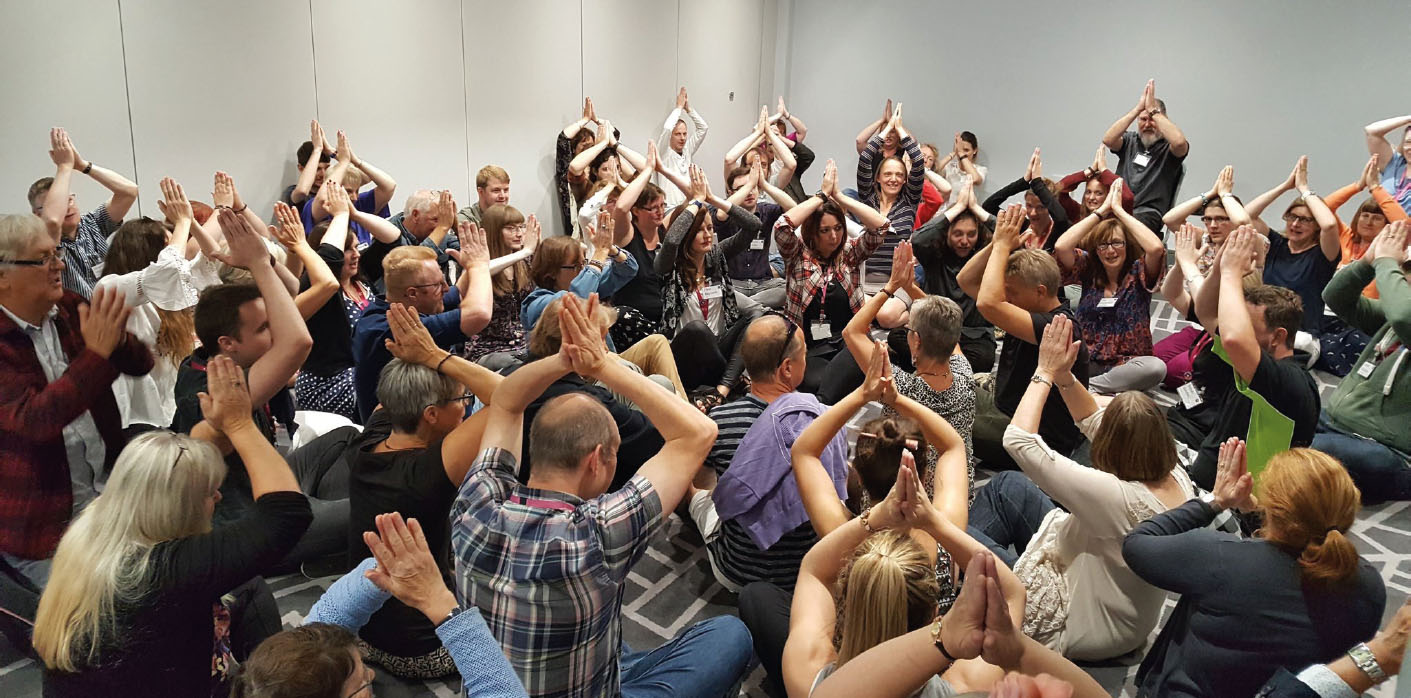
We had only been living in Bali a few days when we first encountered a kecak performance. A taxi driver that we had befriended told us he was performing that evening in Ubud, which is known as the cultural capital of Bali. So after sunset we went to the temple ground – which was about the size of a football pitch – and waited in the dark for the performance to start.
The Hindu priest, dressed completely in white, entered the stage and lit some incense sticks and several candles on a small metal sculpture in the centre of the space. Suddenly we heard in the distance a loud and deep male voice shout ‘Chi!’ and then scores of other male voices respond with ‘Cha cha cha!’ The space soon filled with about a hundred men wearing nothing but sarongs and chanting ‘Cha cha cha!’, their hands waving in the air as they headed towards the light source in the centre. We tried to look for our friend, but it was very hard to see anything in the chaos of bodies moving and chanting, as the only light was from the candles and the full moon.
As with a lot of encounters we had in Bali, the sensory overload was unlike anything we had experienced before. Almost as suddenly as the sound had started, the performers sat down and exhaled a large breath in unison before lapsing into silence while the priest flicked holy water over them to bless their performance. Then a loud ‘Chi!’ was once again heard, this time from the centre of the concentric circles of the performers. All men remained seated and struck up their chanting while jigging their shoulders up and down.
Throughout the hour-long performance several dancers would appear dressed in very ornate costumes to act out a scene from the Hindu epic poem Ramayana. The men continued to chant throughout, often using their hands to form scenery or standing up to act out the monkey army battles when the dancer dressed as Hanuman the Monkey King appeared. Their chanting never stopped and the intensity of the performance was exhilarating.
THE MONKEY DANCE
Kecak (keh-chak) is often described as the vocal chant of Bali, and is also commonly known by its nickname ‘the monkey dance’. The performers are usually men, who are known as the kecak chorus, who make rhythmic vocal sounds that are reminiscent of the Balinese macaque monkeys, and who are considered to form a vocal representation of gamelan music.
There are several different parts that are chanted together to form a unique polyrhythmic texture, which is accompanied by various movements such as jigging shoulders and swaying from side to side. The whole performance, which is very popular with tourists, tends to give the impression that kecak is a much older style than it really is; it was only really developed as secular entertainment in the 1930s. It was originally used to accompany sacred trance dances, called sanghyang, that were performed in religious ceremonies. A secular version of kecak was developed in the 1930s, which combined the kecak chanting with dramatic storytelling.
The version seen today in Bali is one of only a few dances on the island to be performed without the accompaniment of a gamelan ensemble. The accompaniment is provided instead by the hundred-strong chorus.
Whether there is any ‘meaning’ to the kecak dance is disputed among the Balinese, but there are a few favoured theories:
- A gecko in Bali is called a cecak (che-chak) and is thought to bring good fortune. Kecak may originally have been an imitation of the cecak gecko, performed in temples to accompany the sanghyang dances and to bring good fortune from the gods;
- In the Mahabharata there is a heroic prime minister called Kichaka. Throughout his kingdom his name would be chanted after a victory in battle, and the kecak vocal sounds are possibly based on this chanting of his name;
- There is actually no real meaning: kecak is simply a vocal reproduction of the gamelan orchestra.

Mike Simpson leading a kecak workshop with Kent Music
Our Inspire-works facilitators lead Kecak workshops for all ages of children as we find it is a fun, creative, culturally rich and dramatic way of enforcing rhythm and the concept of pulse, while increasing the participants’ ability to hold on to their own part while listening to others.
The Balinese are very good at recycling rhythms and the rhythms found in kecak are also used in gamelan music. We find kecak a very useful tool for teaching complex rhythmic parts vocally before playing them on the instrument. Whenever we've taught kecak workshops as CPD for music hubs, many instrumental and vocal teachers have commented on how they will use it in their First Access or small group lessons to help their pupils with syncopation and polyrhythmic phrases.
After we'd seen the kecak performance in Bali, our friend asked us what we thought. We told him it was absolutely stunning and how we had immediately decided we had to learn more about it so we could bring it to the UK.
Mike Simpson will be leading the workshop ‘Kecak: The Balinese Monkey Chant!’ at the Music & Drama Education Expo À London on 23 February. Register for your FREE tickets at www.musicanddramaeducationexpo.co.uk




